Pine-Pine Gall Rust (also called Western Gall Rust) - Cronartium (old names = Peridermium and Endocronartium) harknessii
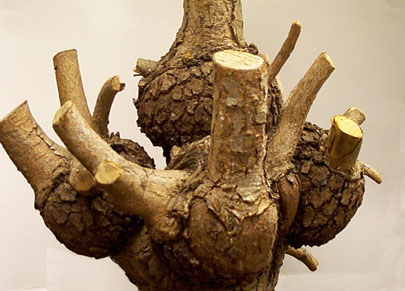
Mutiple galls on pine.
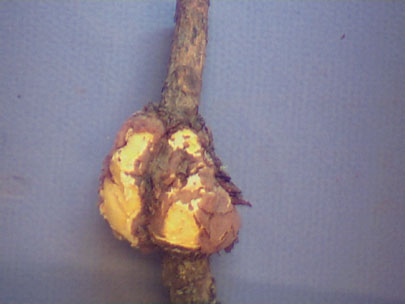
Spores produced on galls look like aeciospores but directly infect pines. This is a microcyclic rust and only aeciospores are produced. No alternate host and aeciospores infect pines - getting its name Pine-Pine Gall Rust
Pine-Oak Gall Rust (also called Eastern Gall Rust) - Cronartium quercuum f.sp. banksiana
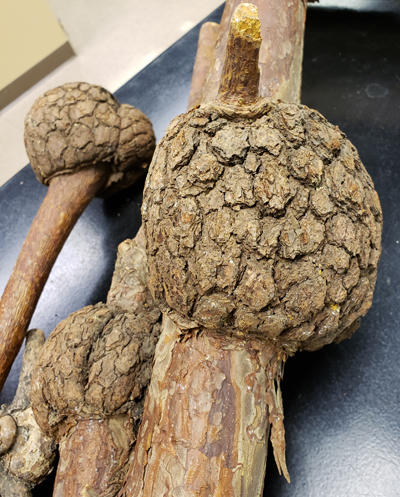
Galls produced on jack pine due to pine oak gall rust.
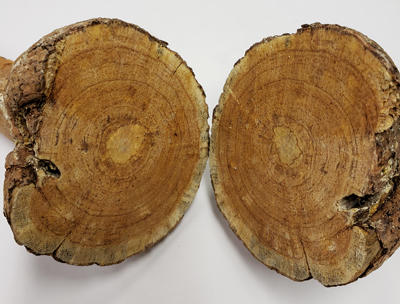
Inside a gall of pine oak gall rust showing the woody nature of the gall. Note the lesion that is starting to develop on part of the gall.
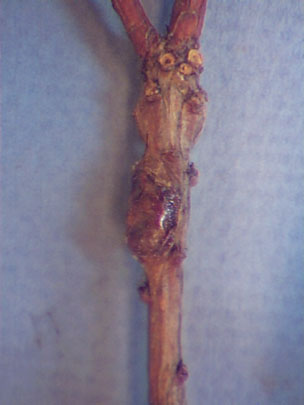
Pine seedling with young gall producing pycnia. The pycniospores (spermatia) are released in a sweet fluid that attracts insects. Insects move spores from one canker with pycnia to another. If they contact the opposite mating type the pycniospores fuse with the receptive hyphae that is also part of the pycnia.
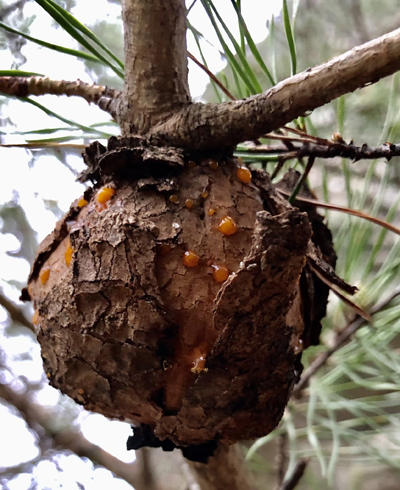
Gall rust from the field with pycnidia
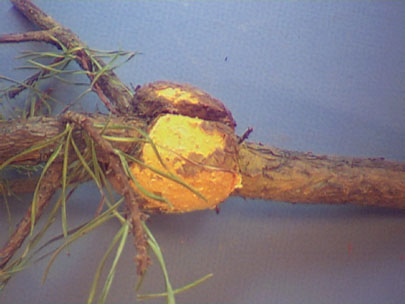
Gall producing aeciospores (loads of yellow - orange aeciospores are produced). The gall bark is pushed off exposing the aecia and aeciospores. Often, the entire gall produces aeciospores. Aeciospores are produced in the spring (late May or early June for a 1-2 week period.
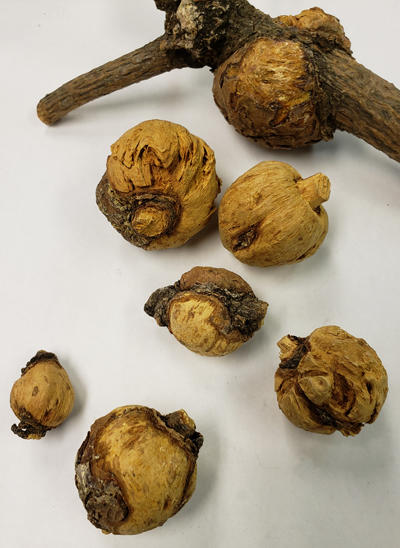
Animals often chew the galls when pycnia are out. The sweet pycnial fluid filled with pycniospores attracts insects (as well as squirrels and rodents)
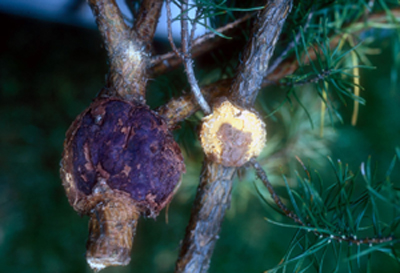
Purple mold, Tuberculina maxima, is a mycoparasite that attacks the aecial stage of stem rusts. The gall on the left is infected with purple mold and the gall on the right is producing aeciospores but is not infected.
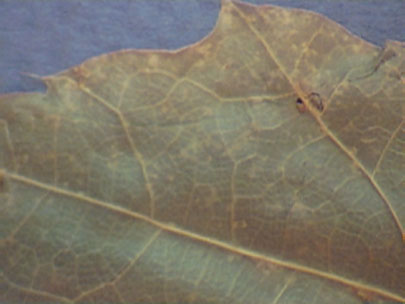
Red oaks are the alternate host. Small leaf spots develop but cause little to no problem on oak leaves. Uredinia (small yellow circular areas) are produced on the lower surface of red oak.
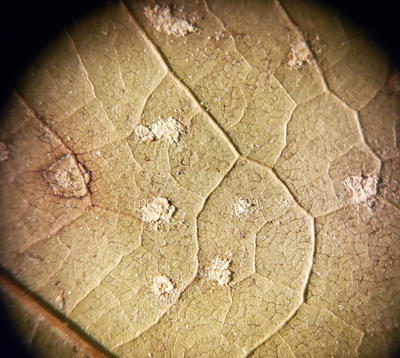
Uredia producing urediniospores on the bottom of a red oak leaf.
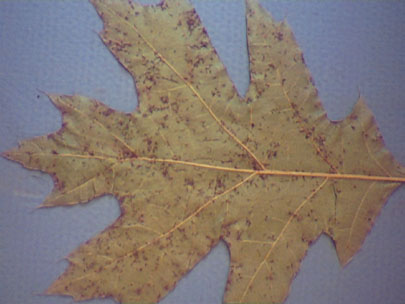
Telia on lower surface of red oak leaves. Telia are brown hair like structures. They consist of teliospores. The teliospores produce the basidiospores that reinfect pines.
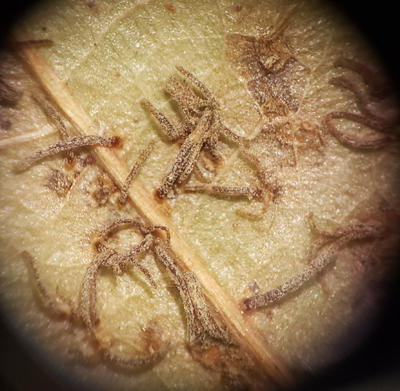
The telia, brown hair-like structures, on the bottom of a red oak leaf. The white powdery appearance on the telial columns are basidiospores.
___________________________________________________________________________________
Fusiform Rust caused by Cronartium quercuum f. sp. fusiforme
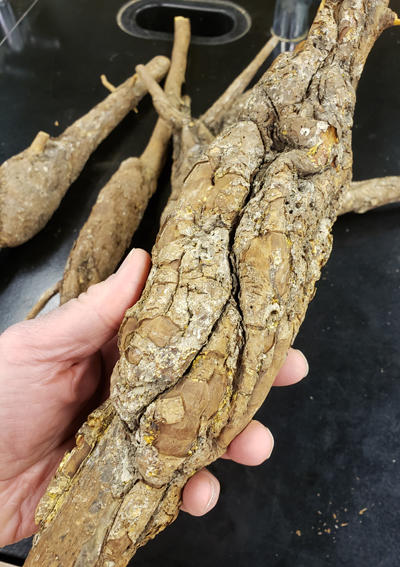
Fusiform rust causing a spindle or fusiform-shaped gall on southern pines such as loblolly and slash pines.
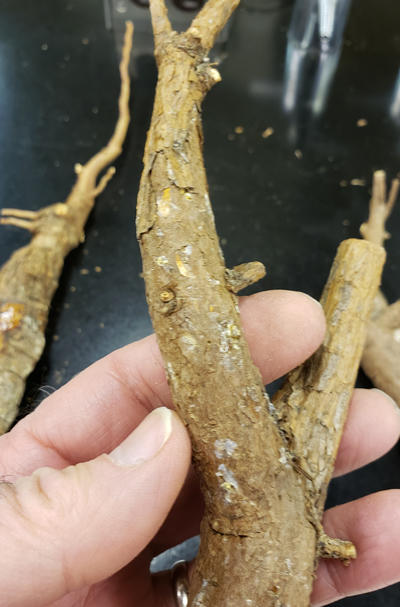
Pycnia, formed soon after infection, produce pycniospores. Pycniospores are form in a sweet fluid attracting insects. Insects move the pycniospores to another infected pine with the opposite mating type.
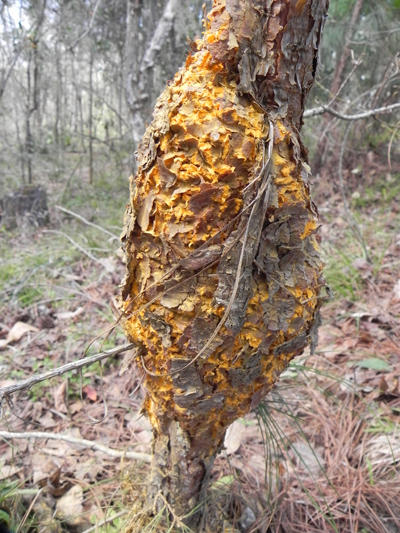
In subsequent years after fertiziation by pycniospores from the opposite mating type, aecia form on the fusiform gall producing aeciospores. Masses of aeciospores are produced on the gall. These spores infect red oaks leaves.
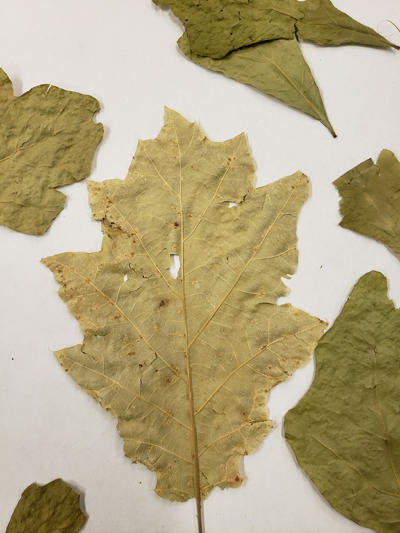
The red oak group of species is the alternate host of Fusiform rust. Uredinia, very small yellow fruiting bodies, form on the lower leaf surface.
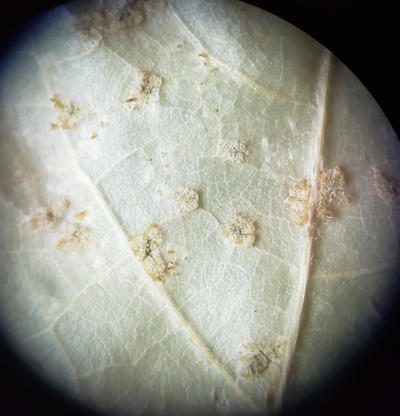
Uredinia produce urediniospores on oak leaves.
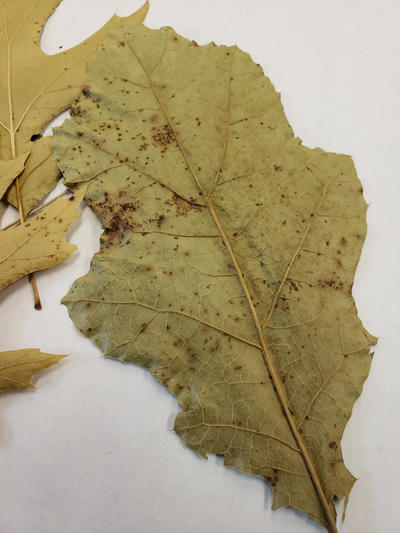
Later in the season, telia form on the bottom of red oak leaves. All oaks in the red oak group are susceptible.
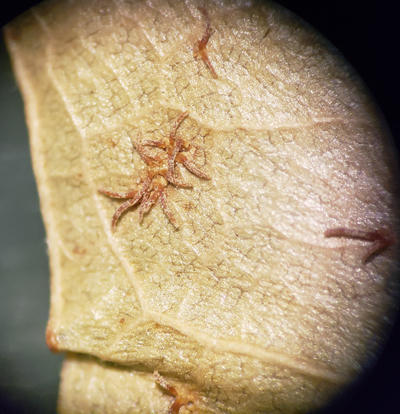
Telia, brown hair-like structures, form out of the old uredinia. The teliospores will produce the basidiospores that reinfect pine.